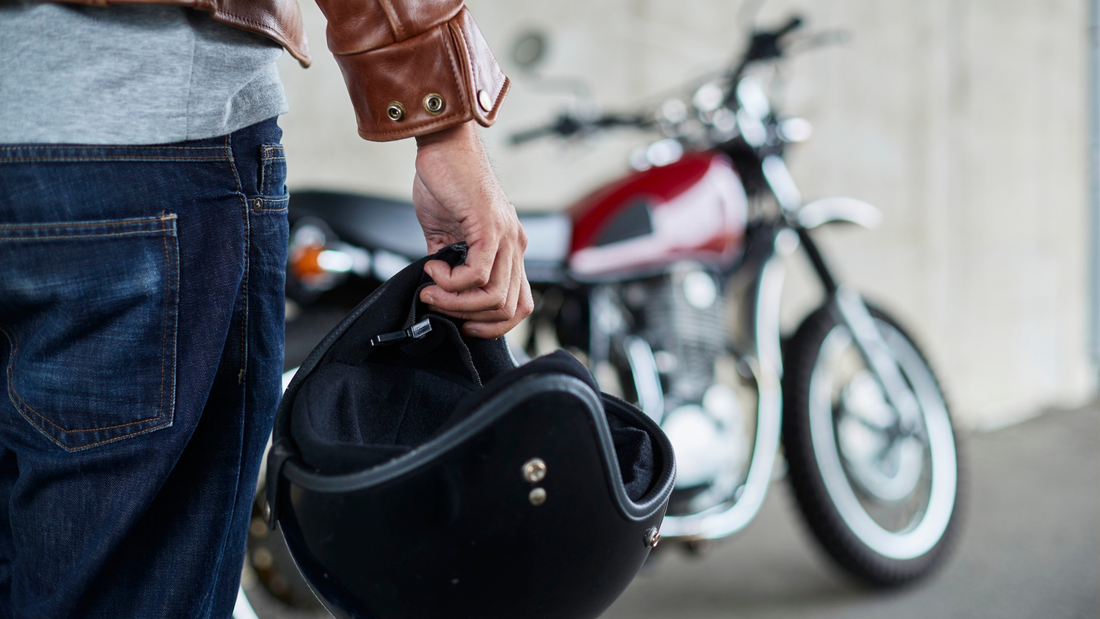
Motorcycle or Car as a First Vehicle? What Young Riders Should Really Consider
For many first-time drivers, the debate between buying a car or a motorcycle isn’t just about transportation, it’s about independence. The thrill of riding a motorcycle, the open road, the simplicity of owning something new and sleek, it’s easy to see the appeal.
A young rider recently shared that he had saved enough money to buy a brand-new Aprilia RS457. The bike cost about €7,200 (roughly $7,800 USD), plus another €800 for safety gear. For the same amount, he could only afford a used 2010 car with 100,000+ miles, something unreliable and hard to maintain.
It’s a fair question: Should you buy a motorcycle instead of a car?
In California, where the weather stays mild and the riding season never really ends, the idea might seem perfect. But the decision goes far beyond cost and comfort. It’s about safety, practicality, and protection, both physical and financial.
Let’s break it down.
The Appeal of the First Bike
Almost every rider remembers the dream: saving up, researching models, and imagining that first start of the engine.
The truth is, motorcycles do have real advantages:
- They’re cheaper to buy brand-new compared to cars.
- They use less fuel.
- Parking is easier in crowded cities.
- Maintenance can be simpler if you know your way around a tool kit.
- And, most importantly, riding feels freeing.
For a young adult in Riverside or anywhere in California, a motorcycle can offer mobility without the financial burden of car ownership, at least at first glance.
But owning a motorcycle is also a serious responsibility. Unlike a car, you don’t get a second layer of protection between yourself and the road. And for insurance companies, that’s exactly why coverage costs differ so drastically.
Why Motorcycle Insurance Is So Expensive
One of the first surprises new riders encounter is the cost of motorcycle insurance.
You might assume that because motorcycles are smaller and cost less than cars, the insurance would be cheaper. But that’s rarely the case.
Insurance companies base premiums on risk, not size or price. Motorcycles are statistically more likely to be involved in accidents and cause serious injuries when they are. Riders are more exposed, and even minor collisions can result in high medical bills.
For young riders, the risk is still higher. Limited experience, more powerful bikes, and a lack of riding history all raise premiums.
In California, a new rider on a sport bike can easily pay more for insurance than they would for a used car.
If you’ve ever wondered “why is motorcycle insurance so expensive?”, it’s because insurers are pricing in the reality that motorcycle crashes often result in severe injury claims, not minor fender-benders.
To learn more about this, check out our article: Why Is Motorcycle Insurance So Expensive? Here’s the Real Story.
Is Motorcycle Insurance Cheaper Than Car Insurance?
Sometimes, yes, but only for the right rider and the right bike.
If you’re in your 30s or 40s, have a clean driving record, and ride a small or mid-size commuter motorcycle, your premiums can be significantly lower than a car’s.
But for a 17-year-old beginner with a sport bike, it’s rarely cheaper.
Motorcycle insurance pricing in California typically depends on:
- Age and riding experience
- Type of bike (sport bikes like the Aprilia RS are higher risk)
- Location (urban areas like Riverside or Los Angeles have higher claim rates)
- Riding frequency and annual mileage
- Safety record and prior claims
Sport bikes are built for performance, not predictability. Insurers know that, and they price accordingly.
The good news? Once you build a history of safe riding, your premiums can drop dramatically.
The Practical Side: Living With a Motorcycle as Your Only Vehicle
A car gives you storage, protection from the weather, and the ability to carry friends or groceries. A motorcycle gives you speed, simplicity, and freedom, but it comes with trade-offs.
Even in Southern California’s mild climate, rain, wind, and extreme heat can make daily riding difficult. You’ll also need to plan for gear, helmets, jackets, gloves, and boots, every time you ride.
Riders who use their motorcycle as their only transportation often discover:
- They can’t carry much more than a backpack.
- Riding gear gets hot and uncomfortable in summer traffic.
- You can’t easily give friends a lift or run errands that require storage space.
- Riding fatigued or in bad weather increases accident risk.
That’s not to discourage young riders, it’s just the reality of what it means to rely on a bike full-time.
The Smart Starter Plan: Buy Used, Learn First
One of the most practical pieces of advice from experienced riders is simple: don’t start with your dream bike.
Brand-new motorcycles depreciate the moment you roll them off the lot. And new riders, even careful ones drop their bikes occasionally while learning balance, slow turns, or parking techniques.
Buying a used motorcycle lets you:
- Save money upfront
- Learn without stressing about scratches or scuffs
- Experiment with what type of bike truly fits your riding style
- Afford better safety gear and insurance coverage
A smaller, reliable used model like a Honda or Yamaha commuter bike can be a better first step. After a year or two of safe riding, you’ll have the confidence and experience to upgrade.
Don’t Overlook Motorcycle Insurance in California
Regardless of what you buy, motorcycle insurance is mandatory in California. But more importantly, it’s your financial safety net.
Here’s what standard coverage usually includes:
- Liability Insurance: Covers injuries or damage you cause to others.
- Collision Coverage: Pays for repairs if your bike is damaged in an accident.
- Comprehensive Coverage: Protects your motorcycle from theft, vandalism, or non-collision damage (like fire or hail).
- Uninsured/Underinsured Motorist Coverage: Protects you if another driver causes an accident and doesn’t have enough insurance.
- Medical Payments or Personal Injury Protection: Helps with hospital costs regardless of fault.
Even if your bike is older or used, it’s worth having solid protection. A single accident can cost far more than the price of your motorcycle.
Customization and Insurance: What to Know
If you plan to modify your bike, from upgraded exhausts to custom fairings, you’ll want to make sure your policy reflects those changes.
Many riders assume custom parts are automatically covered, but that’s not always true. Some insurers require separate coverage for aftermarket upgrades, performance parts, or aesthetic modifications.
You can learn more about this in our related article: Do You Have the Right Motorcycle Insurance for a Customized Bike?
The Financial Math: Motorcycle vs. Car Ownership
At first glance, the math favors motorcycles. Lower purchase cost, lower fuel usage, and fewer moving parts.
But let’s factor in the rest:
- Gear (helmet, gloves, jacket, boots): $500–$1,000
- Insurance: $600–$1,500 annually for new riders in California
- Tires: $300–$500 per set, replaced every 5,000–8,000 miles
- Maintenance: Chain, oil, and brake pads, done more often than on cars
- Registration and inspection fees
In total, the first year of motorcycle ownership could still cost $2,000–$3,000 beyond the bike’s price.
Cars, while more expensive upfront, spread those costs over longer intervals. You won’t replace tires or oil as frequently, and resale values tend to hold steadier.
The Emotional Factor: The Dream vs. The Reality
The emotional pull of owning a motorcycle is real, especially for someone who’s worked hard to afford it. The sense of freedom, independence, and style can’t be replicated in a car.
But that dream comes with responsibility. Every rider, young or old, has to balance passion with protection. You can’t control other drivers, the weather, or every hazard on the road, but you can control how prepared you are.
That preparation starts with the right training, safety gear, and motorcycle insurance quote that matches your needs and experience.
The Smart Choice for California Riders
If you’re in California and considering your first motorcycle, think long-term:
- Start with a used, reliable model.
- Invest in high-quality gear.
- Get a fair motorcycle insurance quote and compare options before you buy.
- Understand the coverage differences between liability-only and full protection.
- Prioritize safety and financial protection as much as performance and aesthetics.
Owning a motorcycle can absolutely be worth it, but the riders who succeed are the ones who treat it as both passion and business.
For many young people, the first vehicle decision shapes years of habits and financial choices. A motorcycle might make sense for short commutes and warm-weather rides, but not as your only form of transportation, at least not right away.
If you live in Riverside or anywhere in California, and you’re thinking about buying your first bike, take time to build a plan. Start small, ride smart, and make sure you’re fully insured before you hit the road.
Again, explore our latest guides for California riders:
